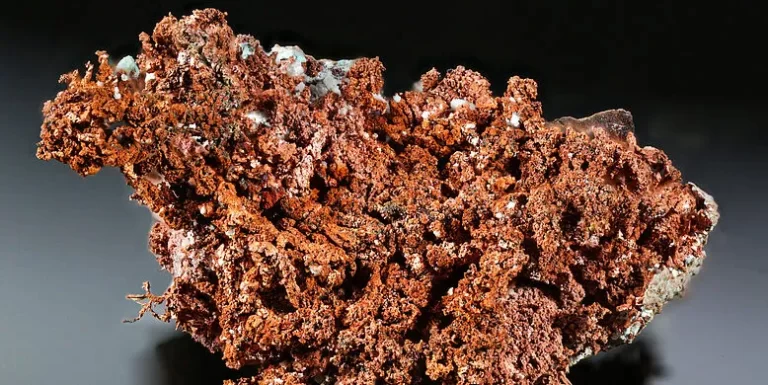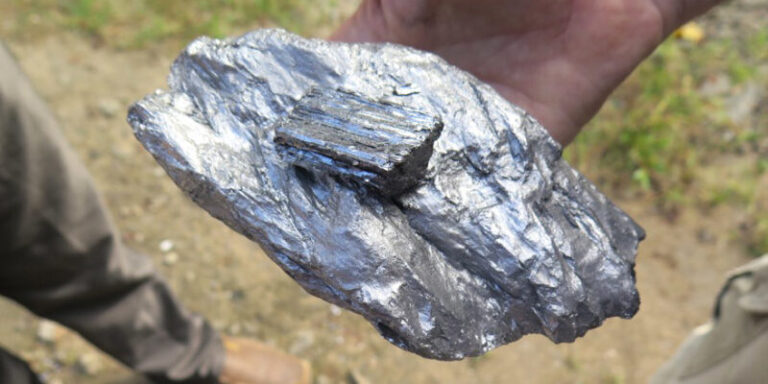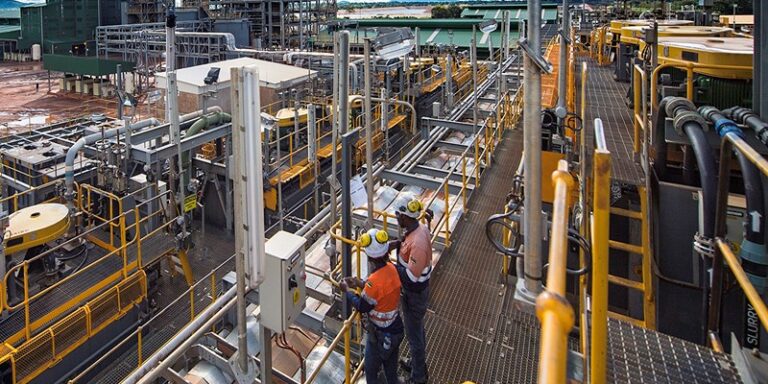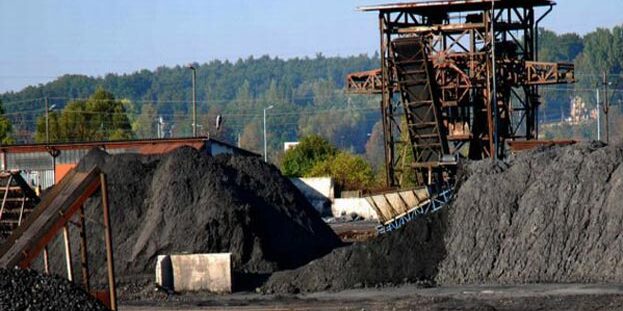
Mining revenue held steady at US$711 billion in 2022, in another year of strong financial performance, according to the PwC annual Mine report.
Rising costs and economic uncertainty squeezed EBITDA** margins from 32% to 29%, new PwC analysis into the sector has revealed.
In its 20th edition, PwC’s 2023 Mine: The era of reinvention, an annual review of the top 40 mining companies globally, examined trends in the mining industry.
The PwC annual Mine report found market capitalization of the top 40 miners tripled from US$400 billion in 2003 to US$1.2 trillion in 2022.
The findings of the PwC annual Mine report captures major themes and developments impacting the industry, especially the impact of the energy transition, which will shape the industry over the coming two decades.
Miners will have to navigate the increasing role governments — and new players like automobile companies — are playing in the sector, while simultaneously ensuring they are well-positioned for the clean energy transition — which requires access to resources.
Given ongoing geopolitical uncertainty, the rapid shift to clean-energy technologies and the importance of both these issues to national security and economic stability, governments around the world have taken swift action over the last 12 months to secure critical mineral supply and, in doing so, changed the playing field significantly.
This includes swift action to form alliances, craft policies and laws, and fund initiatives that will help stabilize the supplies of critical minerals.
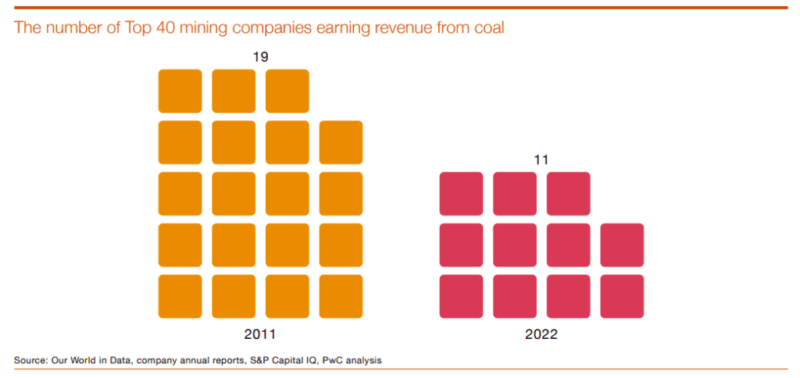
Paul Bendall, Global Mining Leader, Mining & Metals, PwC Australia, said:
“Mining is playing a fundamental role in underpinning the global transition to clean energy, but the path ahead is rocky. A net zero world requires more mined critical minerals, not less, and the flow of industry deal making clearly reflects this. But the increasing rise of geopolitics as an influencing factor in global mining may complicate operations in an increasingly complex world with new actors.”
The role of critical minerals – PwC annual Mine report
Critical minerals dominated deal activity in 2022 as miners raced to capitalise on the global transition towards clean energy, driven by two forces.
First, the role many of these minerals play in the clean energy transition technologies, such as batteries, electric vehicles, and solar and wind generation. Second, the role of critical minerals in national defense, technologies and weaponry.
In 2022, gold, copper, lithium, and cobalt exploration grew significantly. With increased demand, and limited supply for critical minerals, continued exploration investment for these minerals will be essential to the energy transition.
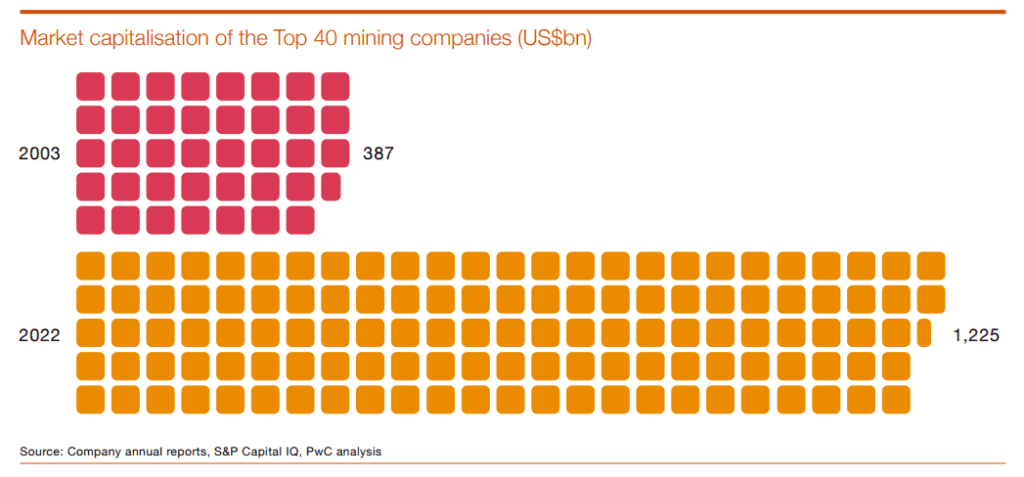
Andries Rossouw, PwC Africa Mining Leader, said:
“Looking forward, the next 20 years have the potential to be as positive for the industry as the last 20 years. Demand for critical minerals — which fuel a growing boom in sustainability requirements like electric vehicles — requires miners to reinvent and reimagine how they will best support their clients and stakeholders globally.
The high-demand era of critical minerals is now. It’s full of opportunity; but for those miners who do not reimagine and reinvent their operations by finding the right value-chain partners, they will likely miss out on the opportunity.”
Decarbonisation
According to PwC’s 2022 survey of more than 4,000 CEOs globally, over one-third of mining CEOs (35%) see their company as highly or extremely exposed to climate-related risks within the next five years. Despite the global goal to reduce carbon emissions, this year’s Mine report found that the geopolitical instability of 2022 saw demand for coal surge, making coal the largest contributor to top 40 revenue at 28%.
Although there will continue to be a role for thermal coal in meeting global energy needs for the foreseeable future, and the path to net zero will not see linear year-on-year reductions in coal use, the trajectory for coal is down.
Despite coal’s growth this year, PwC Mining leaders forecast coal revenue will fall in 2023 as supply increases and demand has normalized.
The number of top 40 miners with coal revenues declined from 19 in 2012 to 11 in 2022.
The most cost-efficient options for decarbonization in the industry include direct electrification, efficiency improvement, and renewable energy, followed by hydrogen power for applications that cannot be electrified.
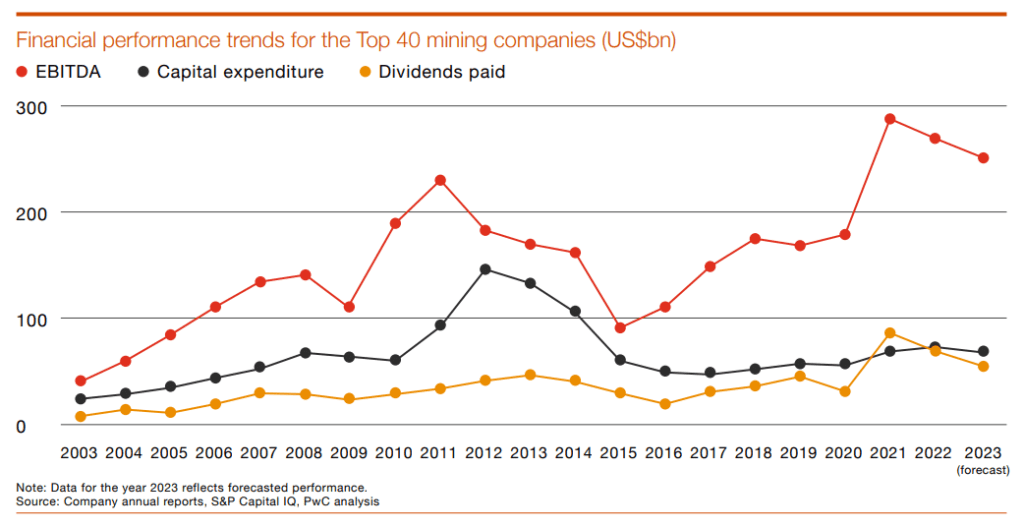
Lauren Bermack, Mine’s lead author, and PwC Canada Deals Mining Leader, said:
“Miners are concerned about meeting the twin challenges of lower emissions while ramping up production to meet demand. To capitalise on decarbonisation’s opportunities, miners need to enact strategies to reduce emissions, save costs and adapt to new markets.”
Decarbonisation will drive business decisions for decades. For miners to capture the decarbonisation opportunity over the next five years, they need to continue to:
- Set and communicate targets for reducing Scope 1 and 2 emissions and engage stakeholders to reduce Scope 3 emissions
- Implement renewable-energy tech at sites and pilot new, lower-carbon solutions for processing
- Evaluate emissions-reductions partnerships with customers and engage them
And in the coming decades, miners should consider:
● Partnering with processors to cut downstream value chain emissions
● Scaling up renewable technologies at mine sites
● Scaling new mine operations as well as low-carbon refining processes
● Commissioning full-scale co-located mining and refining plants
● Integrating renewables in power and transport applications and phase out fossil fuel equipment

Recruiting the future
The mining industry needs skilled employees and faces an existential talent shortage, but to attract talent it must change perceptions about the industry.
In a survey by the Mining Industry Human Resources Council (MiHR) of Canada, a majority of Canadians aged 15 to 30 said they would definitely or probably not consider a career in mining.
The mining workforce also exhibits wide gender gaps. According to the International Labour Organization (ILO), only 14% of executive mining jobs are held by women.
According to S&P Global, women only account for 12.3% of board positions at mining companies globally.
Attracting the industry’s next generation of talent needs a focus on the industry’s skills of the future: in artificial intelligence, robotics, automation and data analytics.
According to a study from the World Economic Forum, 73% of mining companies see local skills gaps as the biggest barrier to adopting new technology.
This technology will not replace the need for humans in mining, but could make the industry more transparent and improve efficiencies, safety and carbon footprints.
For example, the number of autonomous haul trucks in operation globally grew 39% in the year to May 2022, from 769 to 1,068.
To meet the demand for these skill sets, leaders must look beyond the traditional mining talent pool and retrain existing workers.

Mergers and acquisitions
While the total value of top 40 M&A was steady in 2022 compared to 2021, the composition of those deals changed significantly.
Critical-mineral deal value increased by 151% compared to 2021, making 66% of total deal value over the year.
Gold deals, on the other hand, fell by 50%, possibly signaling the end of the precious metal’s dominance of M&A over the past several years.
Copper was 2022’s hot commodity, representing 85% of all critical mineral transactions and 56% of total top 40 M&A.
As a crucial metal in the shift towards sustainable energy, copper is expected to remain in high demand as renewable energy sources take priority.
Miners will also need to work with other industries, such as car companies and battery manufacturers as original equipment manufacturers (OEMs), through joint ventures, partnerships and offtake agreements to secure supply.
As governments incentivize the production and processing of critical minerals, we expect OEMs to make more direct investments in mining and processing assets, increasing the competitive landscape for growth assets and M&A.

Paul Bendall, Global Leader, Mining & Metals, PwC Australia, said:
“Critical minerals will be vital for society and the mining industry over the next 20 years. War, climate change and the technological revolution are putting mining firmly at the heart of the world’s new geopolitical landscape.
The industry must continue to decarbonize while also adapting to a mining environment that may be hotter, harsher and central to driving the net zero economy. If there’s one industry above all else that’s critical to a net-zero future, it’s mining.”
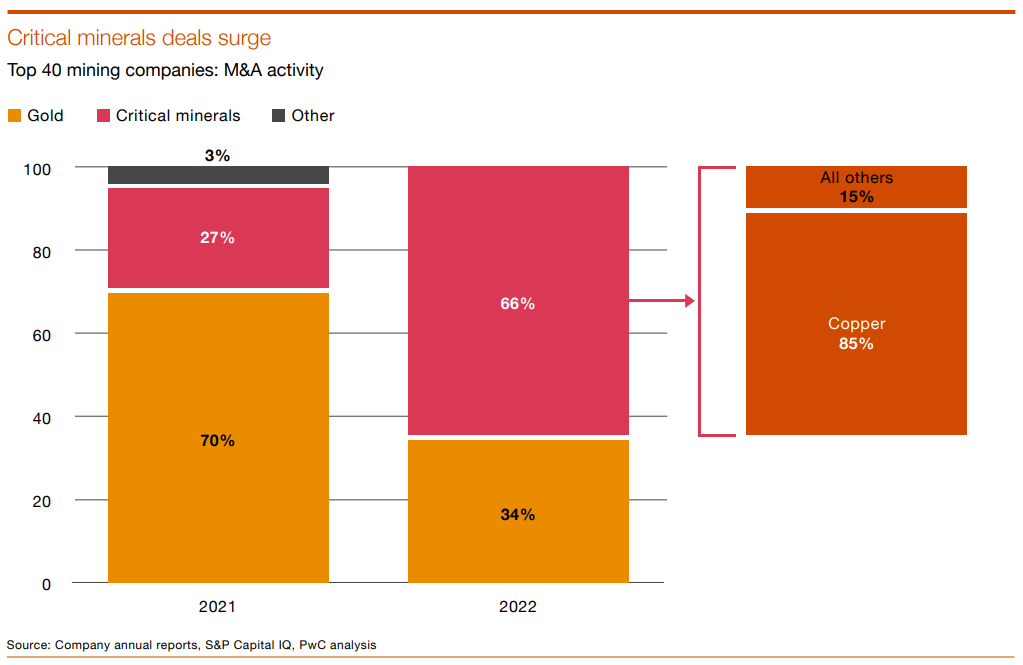
Top recommendations for industry leaders:
- Miners can no longer focus on portfolios of the past. Reinvent yourself, and your company, for the future of critical minerals
- Understand decarbonisation, it will create value across the entire mining value chain
- Reposition yourself for long-term growth in this era of emerging alliances, joint ventures and transformational deals with governments playing a pivotal role
- Invest in technical skills, recruiting and diversity, equity and inclusion. These are existential imperatives
SOURCE:miningreview.com


